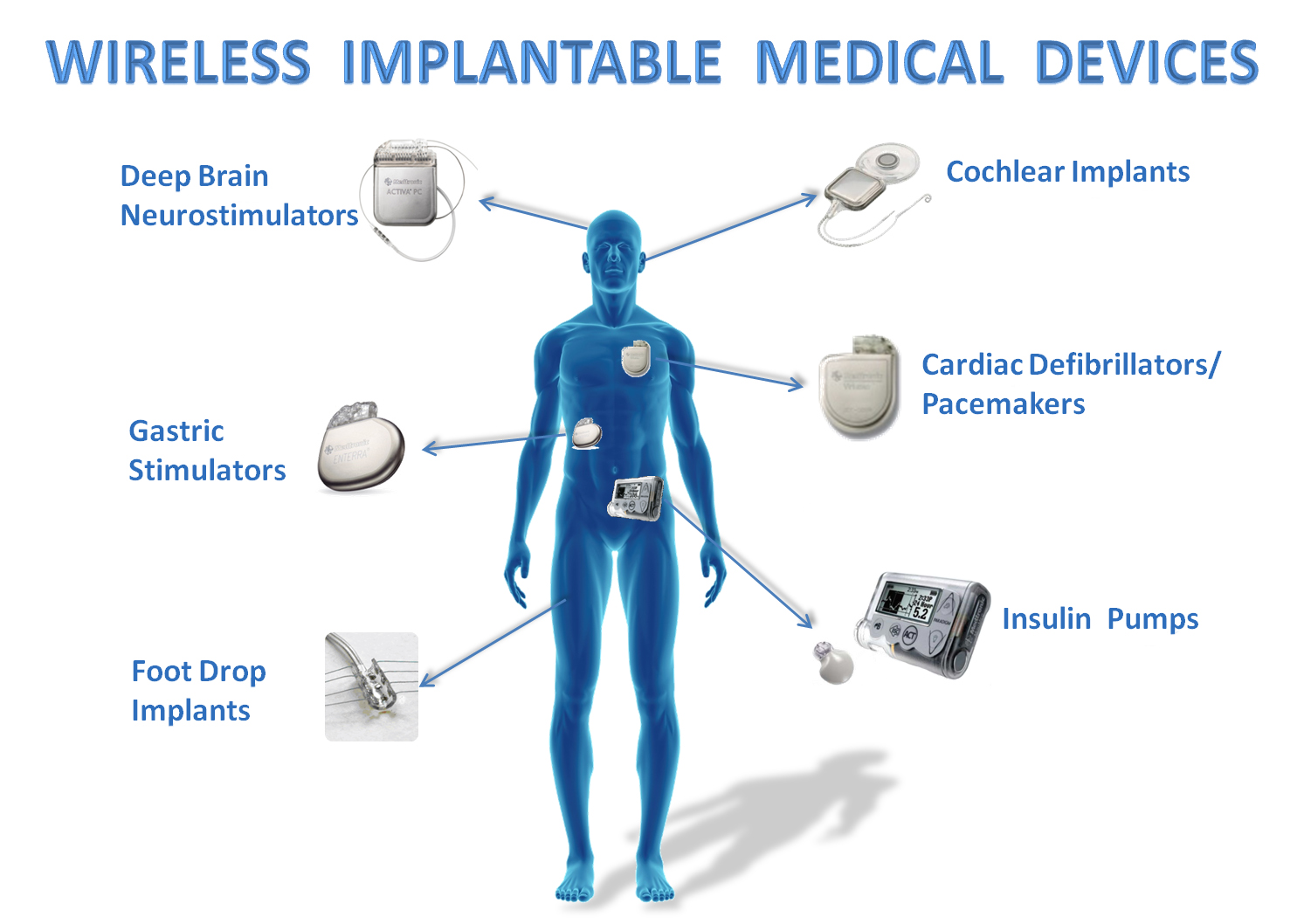Cochlear Implant
A cochlear implant is an electronic medical device that replaces the function of the damaged inner ear. Unlike hearing aids, which make sounds louder, cochlear implants do the work of damaged parts of the inner ear (cochlea) to provide sound signals to the brain.

Deep brain neurostimulator
Deep brain stimulation (DBS) is a neurosurgical procedure involving the implantation of a medical device called a neurostimulator (sometimes referred to as a ‘brain pacemaker’), which sends electrical impulses, through implanted electrodes, to specific parts of the brain (brain nucleus) for the treatment of movement and affective disorders. DBS in select brain regions has provided therapeutic benefits for otherwise-treatment-resistant movement and affective disorders such as Parkinson’s disease, essential tremor, dystonia, chronic pain, major depression and obsessive–compulsive disorder (OCD). Despite the long history of DBS, its underlying principles and mechanisms are still not clear. DBS directly changes brain activity in a controlled manner, its effects are reversible (unlike those of lesioning techniques), and it is one of only a few neurosurgical methods that allow blinded studies.
astric Stimulator
Gastric electrical stimulation with the Medtronic Enterra system helps control the chronic nausea and vomiting associated with gastroparesis by stimulating the smooth muscles of the lower stomach. A small, battery-powered gastric neurostimulator is implanted beneath the skin in the lower abdominal region.
Foot Drop Implant
Electronic implant that helps stroke victims suffering from foot paralysis is now available on the NHS for the first time.
Foot drop is caused by weakness or paralysis of the muscles that lift the front part of the foot. This causes sufferers to drag the front of the affected foot while walking, and they compensate by trying to swing the whole leg from the hip.
It is a disorder of the nerves and can be the result of injuries, stroke or conditions such as cerebral palsy and multiple sclerosis.
